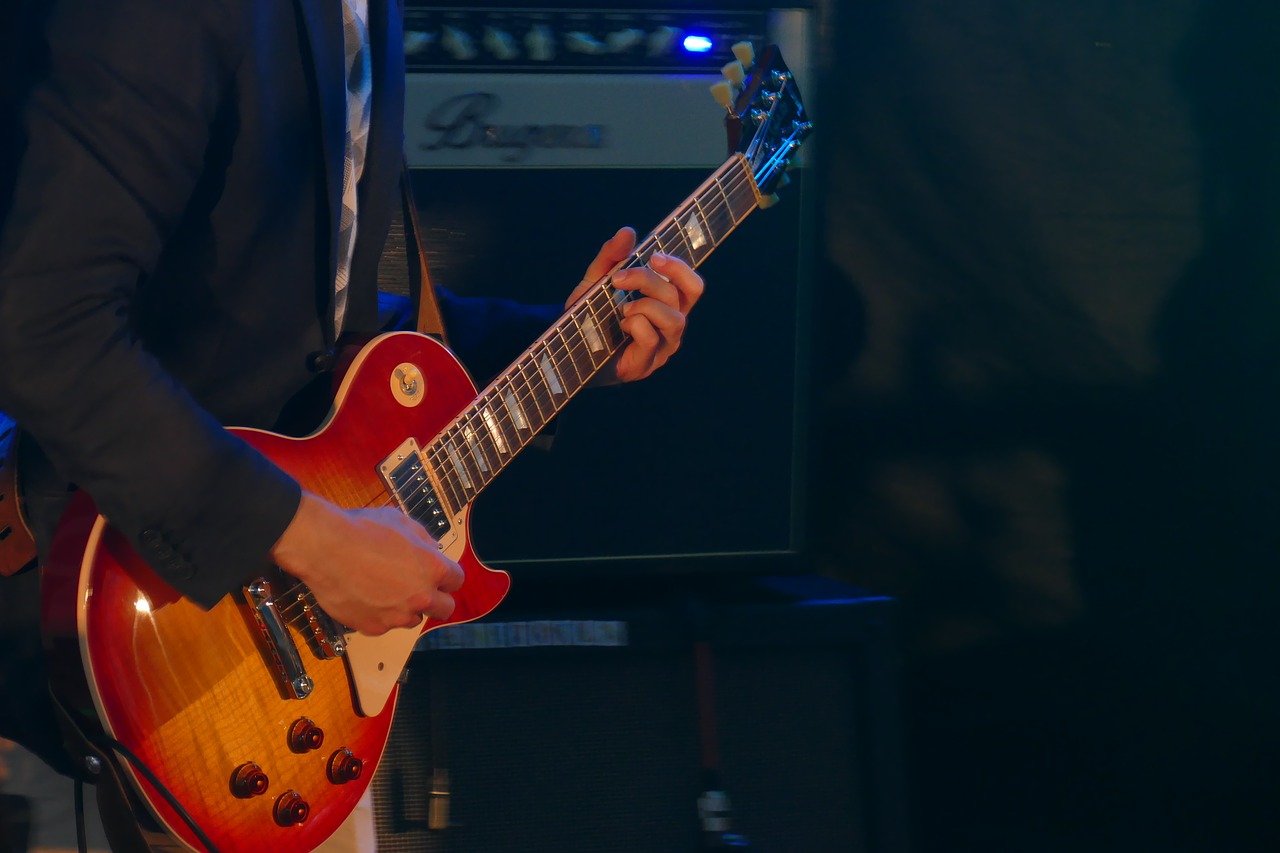
In the United States, the majority of live musicians use a mono amp configuration. Stereo is almost always used in the studio when recording an album or demo. It’s the go-to trick for a much fuller sound. Stereo is a must in a recording situation, although for live application one must assess if it’s practical to use 2 or more amplifiers.
A stereo configuration is great for:
- Atmospheric type delays;
- Widening the spread of effects like chorus and flanger;
- Adding depth and volume to your tone.
When to Play in Stereo
Large scale sound engineers agree that stereo has its benefits for a live audio system. This means that for venues like large theatres and arena’s, a stereo PA system will be common. Often you will see famous guitar players with 2 or more amplifiers in a live situation. This means they can utilize the benefits of the stereo PA system for an enhanced tone. For smaller gigs, however, one must assess the benefits of using a stereo configuration.
If you’re playing in clubs, pubs or restaurants, you may want to consider the following:
- Is there space on stage for 2 or more amplifiers?
- Is it worth carrying double the amount of gear for moderately enhanced tone?
- Is the audience large enough to notice that you’re playing in stereo?
- Is the PA system configured in stereo? This is not the case for most clubs/pubs.
- Do you use effects such as chorus and delay which are common in stereo configurations?
- Do you have a knowledgeable FOH audio engineer? Often there are phase issues associated with micing 2 cabinets.
The big question is, can one amplifier deliver the goods? The answer is a definite yes. Many great guitarists use only one amplifier. Personally I use a mono live configuration. Stereo has its obvious advantages, but for me the pros associated with using 1 amplifier outweigh the cons. I’ve achieved great tone in the past with only 1 amplifier. In some situations the PA can do a lot of work for your sound especially if you have a good front of house audio engineer.
How to Set Up a Stereo Rig
It’s a given that you’re going to need 2 or more amplifiers to be able to play in stereo. The general consensus is to make use of 2 identical tube amps. If you configure the tone of each amp slightly differently, you’re going to end up with a stereo type spread. I like to experiment with stereo setups in amp modulation like Guitar Rig or the Axe FX. This can give you a good indication of the sound you’re after before applying the same settings to a real life situation.
There are different methods for plugging your guitar into 2 amps simultaneously:
- A stereo effects pedal. Most delay and chorus pedals include 2 outputs to allow the use of the effect in stereo;
- A good quality Y-split cable;
- An ABY amp selector pedal;
- A stereo effects processor. If you’re using the drive channel on an amp, this is great for delay and reverb effects.
Types of Stereo Configurations
There are different methods for using a stereo configuration in a live situation. A true stereo image can be created using an effect such a stereo delay (ping pong). Stereo delay pedals can apply a slightly different delay time on each side (left and right) creating a stereo effect experienced on Hi-Fi systems. It can be argued, however, that by using 2 individual tube amplifiers you will have a stereo sound anyway, as the sound of each amplifier will inevitably differ.
Many guitarists combine two different amp types to achieve their stereo sound. If you have a good ear (and a large budget, or just an abundance of amps lying around to test) you can combine different amp types and experiment with the outcome of the blended tone. This can also be done in amp modulation systems like Amplitube.
The following configurations are common in live situations:
Wet/Wet: 2 amplifiers; effects are sent to both amplifiers. This is a common setup in relation to a stereo effects pedal. A stereo image can be created with an effect such as delay by applying a slightly different delay time to each amp.
Wet/Dry: 2 amplifiers; one set completely dry, and the other includes your effects. This can be great for a recording situation so the mixing engineer can have a separate control for your effects.
Wet/Dry/Wet: 3 amplifiers; middle amp is set completely dry. Each side (left and right) includes effects. This allows you to run a true stereo delay (or other effect), whilst maintaining the characteristics of a dry amp (no digital effects applied). You can also achieve a different stage mix for your effects as opposed to the front of house mix.
